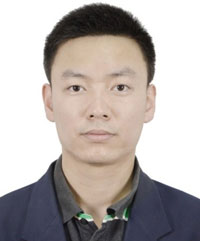Invited Talk: Xiaoming Chen, Xi’an Jiaotong University
Special session 11: Metamaterials, Metasurfaces, and Their Electromagnetic Applications

Short Bio:
Xiaoming Chen received the B.Sc. degree in electrical engineering from Northwestern Polytechnical University, Xi’an, China, in 2006, and M.Sc. and PhD degrees in electrical engineering from Chalmers University of Technology, Gothenburg, Sweden, in 2007 and 2012, respectively. From 2012 to 2014, he was a postdoctoral researcher at Chalmers University of Technology. From 2014 to 2017, he was an antenna specialist at Qamcom Research & Technology AB, Gothenburg, Sweden. Since 2017, he has been a professor at Xi’an Jiaotong University, Xi’an, China. His research areas include MIMO antennas, over-the-air testing, reverberation chambers, and dirty RF. Prof. Chen received a prestigious national grant in 2018. He serves as an Associate Editor (AE) for IEEE Antennas and Wireless Propagation Letters (AWPL) and received the outstanding AE awards in 2018, 2019 and 2020, and the Young Scientist Awards from URSI GASS 2017 and AT-RASC 2018.
Title: Investigation of OAM Multiplexing in Multipath Environment
Abstract:
Due to the orthogonality of its modes, orbital angular momentum (OAM) has found various applications. The majority of previous communication works assumed line-of-sight (LOS) scenarios, whereas the more realistic multipath (scattering) environments were considered only in a few works. It was generally believed that multipath had adverse effect on OAM multiplexing in that multipath tends to introduce crosstalk between different OAM modes while the conventional OAM detection relies on the orthogonality of OAM modes. Actually, the crosstalk caused by the multipath can be readily mitigated by the conventional multiple-input multiple-output (MIMO) equalizations. It was shown very recently in that, by combining with a conventional MIMO equalizer, OAM multiplexing could be extended to multipath environments. This finding was verified experimentally in a reverberation chamber. However, the reverberation chamber represents a rich isotropic scattering environment, where the propagation waves are statistically isotropically distributed over the three-dimensional angular domain, whereas typical multipath environments are usually non-isotropic, i.e., the propagation waves are confined within certain angular range (spread). This motivates us to study the angular spread effect on OAM multiplexing in this work. It is well known that there is a null (divergence) in the center of the OAM beam, which limits the OAM communication range in LOS environment. Nevertheless, as will be shown later in this work, as long as the angular spread in the multipath environment is comparable to or larger than the divergence angle of the OAM beam, OAM multiplexing is feasible in multipath environments. |

